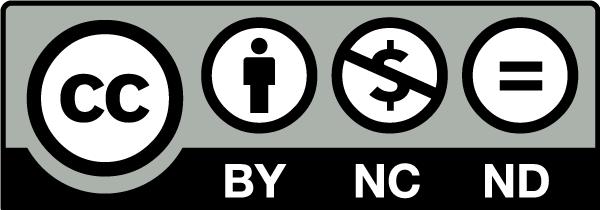Being There: Travel Documentaries
DOI:
https://doi.org/10.13136/2281-4582/2015.i6.300Abstract
The growing success of TV travel documentaries lies in this unusual way of travelling and in the fully engaging experience that its multimodal dimension offers. Travel documentaries have the power of nullifying time and space, making Star Trekian fictional teleportation possible; they are a powerful way of closing the gap between the viewing audience and distant tourist destinations. Thanks to the wide diffusion of technology and social networks these types of documentaries are more accessible by everyone everywhere. Derived from documentary films, travel documentaries have developed their own genre with specific features and organisation: a genre used by the tourist industry to persuade the target audience or by TV channels to sell tourist products ranging from videos to travel tours. Documentaries offer both the logic of immediacy and that of hypermediacy typical of remediation since they heighten the viewer’s experience of the event as authentic. This contribution illustrates how in the last two decades changes in travel documentary visual format, organisation and use of new technologies have re-mediated both their language, their information structure and their impact on universal audiences.
References
Australian Broadcasting Authority. Interpretation of Documentary for the Australian Content Standard. Sydney: Australian Broadcasting Authority, 2004.
Barnouw, Erik. Documentary: A History of the Non-Fiction Film. Oxford: Oxford University Press, 1974.
Beattie, Keith. Documentary Screens: Nonfiction Film and Television. Basingstoke: Palgrave, MacMillan, 2004.
Bolter, Jay David and Richard Grusin. Remediation: Understanding New Media. Cambridge: MIT Press, 1999.
Bruzzi, Silvia. New Documentary: A Critical Introduction. London: Routledge, 2000.
Cohen, Erik. “Authenticity in Tourism Studies: Apreś la Lutte.” Tourism Recreation Research 32.2 (2007): 75- 82.
Ceruti, Maria Angela and Lucilla Lopriore. “Subtitling and Language Awareness: A Way and Ways.” Subtitles in Language Learning. Eds. Ives Gambier, Annamaria Caimi, and Cristina Mariotti. Bern: Peter Lang, 2015. 293-321.
Coltman, Michael. Introduction to Travel and Tourism: An International Approach. New York: Van Nostrand Reinhold, 1989.
Corrigan, Timothy. A Short Guide to Writing About Film. New York: Longman, 2004.
Dann, Graham M.S., The Language of Tourism: A Sociolinguistic Perspective. Wallingford: CAB International, 1996.
Dann, Graham M.S., “The Self-admitted Use of Cliché in the Language of Tourism.” Tourism, Culture & Communication 3 (2001): 1-14.
Das, Trisha. “How to Write a Documentary Script” Unesco.org. 2010. http://www.unesco.org/new/fileadmin/MULTIMEDIA/HQ/CI/CI/pdf/programme_doc_documentary_script.pdf. Last visited 16/10/2015.
De Greef, Willem and Willem Hesling, eds. Image - Reality – Spectator: Essays on Documentary Film and Television. Leuven: Acco, 1989.
Dobson, Stephen. “Remediation. Understanding New Media: Revisiting a Classic.” Seminar.net - International Journal of Media, Technology and Lifelong Learning 9.2 (2013): 1-9.
Ellis, Jack. A New History of Documentary Film. New York: The Continuum Publishing Book, 2006.
Espasa, Eva. “Myths about Documentary Translation”. Ed. Pilar Orero. Topics in Audiovisual Translation, Amsterdam: John Benjamins, 2004. 183-199.
Gotti, Maurizio. “The Language of Tourism as Specialized Discourse.” Translating Tourism. Eds. Oriana Palusci and Sabrina Francesconi. Trento: Editrice Università degli Studi di Trento, 2006. 15-34.
Grierson, John. “On Documentary.” Cinema Quarterly 1.3 (1933):135-139.
Kress, Gunther. Literacy in the New Media Age. London: Routledge, 2003.
Kress, Gunther and Theo van Leeuwen. Reading Images: The Grammar of Visual Design. London: Routledge, 2004.
MacCannell, Dean. “Staged Authenticity: Arrangements of Social Space in Tourist Settings.” American Journal of Sociology 79.3 (1973): 589-603.
MacCannell, Dean. The Tourist: A New Theory of the Leisure Class. New York: Schocken Books, 1976.
Nichols, William. Representing Reality: Issues and Concepts in Documentary. Bloomington: Indiana University Press, 1991.
Nichols, William. Documentary and the coming of sound. FilmSound org. 2001. http://filmsound.org/film-sound-history/documentary.htm. Last visited 16/10/2015.
Nichols, William. Introduction to Documentary. Bloomington: Indiana University Press, 2010.
Pearce, Philip. “Persisting With Authenticity: Gleaning Contemporary Insights for Future Tourism Studies.” Tourism Recreation Research 32.2 (2007): 86-89.
Renov, Michael, ed. Theorizing Documentary. New York: Routledge, 1993.
Rosenthal, Alan. New Challenges to Documentary. Manchester: Manchester University Press, 2005.
Urry, John.Consuming Places. London: Routledge, 1995.
Tyler, Anne. The Accidental Tourist, New York: Ballantine Books, 1985.
Wang, Ning. “Rethinking Authenticity in Tourism Experience.” Annals of Tourism Research 26.2 (1999): 349-370.
Wells Paul. “The Documentary Form: Personal and Social ‘Realities.’” An Introduction to Film Studies. Ed. Jill Nelmes. London: Routledge, 1996: 212-235.
Downloads
Published
Issue
Section
License
Copyright (c) 2015 Lucilla Lopriore

This work is licensed under a Creative Commons Attribution-NonCommercial 4.0 International License.
Iperstoria is an Open Access journal.- Authors retain copyright and grant the journal right of first publication with the work simultaneously licensed under a Creative Commons Attribution 4.0 BY-NC License that allows others to share the work with an acknowledgement of the work's authorship and initial publication in this journal.
- Authors are able to enter into separate, additional contractual arrangements for the non-exclusive distribution of the journal's published version of their work (e.g., post it to an institutional repository or publish it in a book), with an acknowledgement of its initial publication in this journal. We require authors to inform us of any instances of re-publication.







